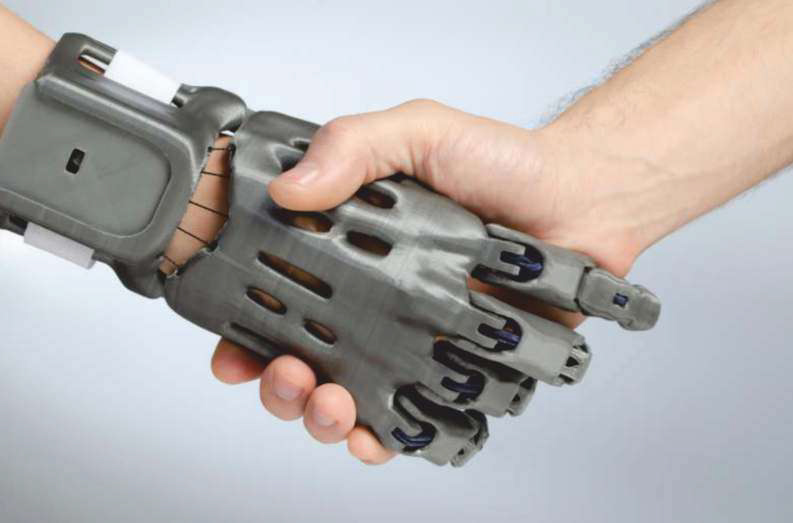By Adam Papp, Daniel Nemes and Ildiko Bacskay
Department of Pharmaceutical Technology, Faculty of Pharmacy, University of Debrecen
Three-dimensional printing, additive manufacturing, or rapid prototyping is a layer-by layer method to build up 3D objects. With the aid of this unique manufacturing process, you can reach personalized production with high resolution, low cost, and up to 88% reduction of materials used. Nowadays this technology is available and affordable not only for industrial and research use but also for most people. The number of published articles about 3D printing has grown exponentially in the past decades. This technology is used in the automobile and aviation industry, in the building industry, in the health industry and to produce consumer items. Not surprisingly, the pharmaceutical field has a big interest in using additive manufacturing to produce personalized medicines or to adjust drug doses and combinations with precise control of drug release to meet the needs of different clinical areas (e.g. pediatrics, ultra-fast release, long-lasting implants).
Understanding the Process and Techniques of 3D Printing
The printing of a three-dimensional product begins at the desk with a computer. First, you need a CAD-based software to design the printable object, but templates are downloadable from the internet, or you can use a 3D scanner to scan spatial surfaces. In this case, plenty of hours for post-processing work is inevitable. There is a huge variety of software solutions on the market, even with free access, however, if you require greater flexibility and advanced designing capabilities, you will need to purchase one of them. At the end of the shaping, an STL (stereolithography) file is generated, which describes a triangular structure of the surface geometry, without any information of color or texture. In the next step, with the help of a slicer software, the 3D object is sliced into layers and these layers will be printed on top of each other. Thereafter, the sliced file is converted into a G-code file, which encodes all information for successful printing. The G-code file contains the coordinates of the movement of the printer head unit, the printing speed, fan speed, printing temperature, etc. Finally, you need a 3D printer and some materials to print the designed object. However, that was only the superficial layer. Let me proceed to explain its deeper aspects.
At first sight, the types of 3D printers, the methods used by different printers, and the variety of printable materials can be desperate. The most commonly used methods in pharmaceutical manufacturing are additive processes, like Fused Deposition Modelling (FDM), Binder Jet Printing (BJP), Precise Extrusion Manufacturing (PEM), or solidifying processes, such as Stereolithography (SLA) and Selective Laser Sintering (SLS).
With the help of three-dimensional printing, manufacturers can cost-effectively print prototypes, make changes to the original model in size, shape, etc., and reprint the product. Indeed, broken parts of the printer can be fixed by printing them, which is amazing. The modifying and finalizing process requires less time. Utilizing the technology of 3D printing, the personalization of medicines for special populations, such as the elderly and children or rare disease groups, as well as the production of small batches, are no longer a problem.
Enhancing Medication Administration
Drug dosages on the market are standardized, and therefore individualized dose administration can be achieved mainly by manually breaking tablets or dissolving them, which can lead to medication errors, inaccuracy, damaging the structure of the preparation, and cause adverse events.
Furthermore, the low doses used in pediatrics are often difficult to reach with conventional tablets or capsules. 3D printing offers versatile technical solutions to improve appearance (e.g. color, symbols), taste and shape (e.g. to help swallowing). No outer coating is required to oppress taste or smell and the controlling of drug release was never easier before. With loose and porous preparations, a faster disintegration is achievable than with compressed tablets. For example, the first and till now the only registered and 2015 FDA-approved medicine is Spritam®, containing levetiracetam to treat epilepsy is a fast, in-mouth disintegrating tablet.
On the other hand, the production of multiple-drug-containing formulations is an option for patients taking multiple medications. Not only incompatible active ingredients can be printed next to each other, but the fabrication of different compartments can help to reach pulsatile release as well as controlled release formulations to mimic the circadian rhythm.
The Potential and Limitations
To look ahead, it is possible to print molecules with additive manufacturing technology. Thereby new active pharmaceutical ingredients can be designed and prepared, thus the way into in vitro and in vivo research could take much less time than ever before. There are papers published about preparing small molecules by basic chemical reactions, and about 3D-printed self-assembly molecular structures in a liquid-based medium. If active ingredients are printed along with biocompatible polymers (e.g. polycaprolactone, polylactic acid, thermoplastic polyurethane), these printlets are implantable and can achieve local or targeted effects.
The technology of 3D printing is innovative, and the field of use is versatile, however, it has some limitations as well. The melting point of some active ingredients is lower than that of the polymers used, thus thermal degradation can interrupt the printing process. The distribution of the active ingredient in a polymer prepared with hot melt extrusion can be heterogeneous, which can lead to dosing errors. Furthermore, printer types are not interchangeable, and different techniques have their own advantages and disadvantages, therefore one printer is barely enough to print a wide range of pharmaceutical devices. For too small or too large objects you will also need another printer. From here affordability is in a different perspective. Nevertheless, this technology has many new features up ahead to discover.
















